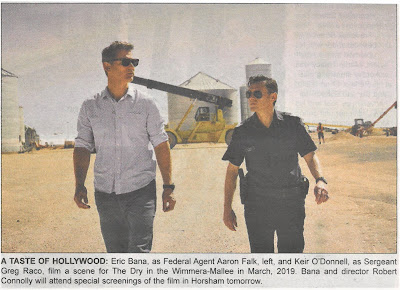Since words like “pandemic” and “coronavirus” became part of
everyday parlance, Australians have sought solace in researching their family
histories in increasing numbers.
Tapping into this desire to know more, the National Library
of Australia announced a new series of Family History for Dummies online
tutorials as the international and local shutdowns took effect. The NLA found the sessions booked out within minutes. Normally
around 100 people sign up for online classes. In April, they had 356, and
around a third of those lived in regional Australia.
Ancestry.com's main focus is on the internationally
lucrative family history genre fuelled by such reality TV documentaries as ‘Who Do You Think You Are?’ (which ancestry.com sponsors). They said during April & May there was a 78% increase in the use of the word
"ancestry" across Facebook, Twitter & other social media.
It does show there has been this massive shift during lockdown of Australians
keen to find out more about their own families. Time spent 'in iso' with little
else to do, is clearly a factor.
The stereotype is that family history is something you do
when you’ve retired, but a personal interest in family history can also be inspired
by certain life events - the
birth of a child, death of a parent or another close loved one.
Researching your own family history has never been easier or
more accessible. Cemetery records, gravestones, birth certificates — you can
find so much now at home on a computer.
Administered by
the National Library of Australia, Trove should be considered as a starting point. It celebrated its 10th birthday at the end
of June with a much-improved, user-friendly redesign.
Described as ‘Australia’s online cultural and
research portal’, it is really the free go-to-shop for anyone interested in
finding out a particular fact about Australia’s past, be that in newspapers on a photo, listed in a gazette...
The new version contains 6.4 billion records of Australian
history, culture and research, painstakingly gleaned from 140 other libraries,
museums, archives and media organisations.
However, the updated Trove is more accessible than ever,
particularly for Indigenous Australians, with more than 200 Indigenous
languages on the site and a filter which prevents anyone from seeing culturally
disturbing photos or documents without clicking approval.
There are a lot of lessons to be learned by looking
at the lives of our ancestors during an epidemic or pandemic.
Based on The Age article: Pandemic prompts growth in familytree digging














































